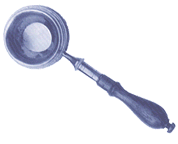
 |
| 25 Pounds of Presentation to a Grand Master | Click on any image for a larger view. Scroll to view more items. |
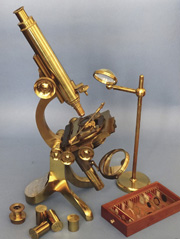 |
|
LARGE MASONIC PRESENTATION MICROSCOPE, English, c. 1886, signed "Walter Lawley, 8 Coventry St. W. & 78 Farringdon St. London E.C.," with an applied silver plaque engraved, "Presented to Bro. Jas. Harford Hawkins, by the members of the Lodge of Prosperity 65 as a mark of their esteem & respect on his leaving the Chair of W.M. March 25th 1886." Made of bright lacquered brass 18" (46 cm) high on a massive 7" (18 cm) wide Crouch-type base, extending to 25" (64 cm) by drawtube and rack-and-pinion coarse focusing. Fine focus is by nose-mounted screw-driven short lever. It features geared mechanical stage (with manual rotation) with accessory slide and large dual mirror below. Accessories include large free-standing bull's eye condenser, set of Nicol prisms for petrologic use, stage forceps, live box, ocular, substage wheel of stops, and three objectives by C. D. Ahrens, London. The original fitted mahogany case, with internal slide drawer and large brass handle, is in fine condition, the microscope extremely fine, with original finish throughout. The maker of this impressive outfit, which in its case weighs a total of 25 pounds (11.5 kg), specialized in optical instruments during the last quarter 19th century. In 1881 he received a provisional patent for a camera with an integral changing box. He advertised as dealing in both new and second-hand apparatus. The Freemason presented with this gift was a member of, and eventual Grand Master of, the Lodge of Prosperity No 65. The gift is actually recorded in the published history of the Lodge (Ferry, 1893). This Lodge was constituted in 1810, in Bethnal Green, and continues today with its home on Russell Square. Hawkins wrote on the Feltmakers Company and seems to have been a Major in the Honorable Artillery Company. (10136) $5500. |
 |
| "Wriggle-Work" on Brass | Click on any image for a larger view. Scroll to view more items. |
|
EARLY WATSON ALL-BRASS MICROSCOPE, English, c. 1875, signed on the main tube "Watson & Son, 313 High Holborn, London," and similarly on the objective canisters. This is a sturdy stand, 14-1/4" (36 cm) tall extending to 17-1/4" by internal rack and pinion. Stage and base are decorated with "wriggle-work" patterns, and this "student" stand has buttressed claw-foot base, hinged limb, large diameter main tube, ocular, objective (Watson, probably later), stage clips, and substage mirror. The outfit includes the original fitted mahogany case with slide drawer, and fine bullseye condenser on stand. Condition is good, noting significant losses to the clear lacquer finish, especially on the brown main tube. The Watson firm was established in 1837, but made their first commercial microscopes in the 1870's. The name became "Watson & Son" in 1868, changing again in 1882 when the second son joined the firm. The present microscope must be one of their earliest; one similar but unsigned example is known to us. There is no apparent serial number on ours, which may predate their use by Watson. (10106) $1150. |
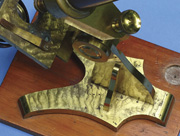 |
| By the Famous Maker of Test-Plates | Click on any image for a larger view. Scroll to view more items. |
| The Magnificent Micrographia Plates, 1745 | Click on any image for a larger view. Scroll to view more items. |
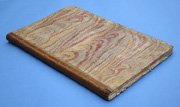 |
|
ROBERT HOOKE'S WONDERFUL VIEWS THROUGH THE MICROSCOPE, English, 1745, this being a first edition of "Micrographia Restaurata: or, the Copper-Plates of Dr. Hooke's Wonderful Discoveries by the Microscope, Reprinted and Fully Explained..." Pagination is [4], 70 (including 4p. index), plus 33 full-page plates (3 folding). The book is a large 9-3/4" x 15" (25 x 38 cm). Margins are wide, binding seems original with patterned paper over board covers and leather spine. Condition is fine with light wear and essentially no soiling or foxing. This is a magnificent presentation of the plates of Hooke's famous Micrographia, with updated language in the explanations of the plates. Produced 40 years after Hooke¹s death, it supplied a need explained in the preface: "The Micrographia...being grown extremely scarce, and the price thereof greatly raised, it can fall into the hands of the very few...." It is argued that the plates are much more instructive and entertaining than the text, and that all but seven of the original copper plates were recovered and used here, the few others being re-engraved as exact copies. Captions were added within the plates, and new discoveries added to the text. (and see back cover of this catalogue) The plates in this copy are indeed magnificent, with rich blacks and fine detail. A wonderful presentation of some of the first drawings made through the microscope. (10105) $12,000. ex: Spottiswoode collection |
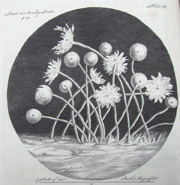 |
 |
| Photomicrographs on Glass | Click on any image for a larger view. Scroll to view more items. |
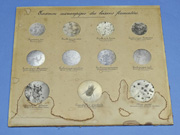 |
|
"EXAMEN MICROSCOPIQUE DES BOISSONS FERMENTÉES," French, c. 1900. Mounted between 13-1/8" x 14-3/4" (33 x 37 cm) heavy card panels are twelve circular photographs on glass(?) Diameters range from 1-1/2" to 2-1/4" (4 - 6 cm). The photos present various molds, fungi, and even parasites found in fermented beverages (beer, wine, cider, malt, etc.), and all are identified on the printed upper card, along with their magnifications. Condition of the photos is fine, the card good except for very obvious water stains. (10116) $650. |
| Probably by Benjamin Martin | Click on any image for a larger view. Scroll to view more items. |
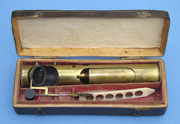 |
|
UNUSUAL EARLY CYLINDRICAL MICROSCOPE, possibly Benjamin Martin, c. second half 18th century. The instrument forms a slim lacquered brass cylinder 6" (15 cm) long and 1" (2.5 cm) in diameter. The sliding microscope tube itself has a triple-lens ocular and single-lens objective, and gives good images. The body tube has large side openings for illumination, a tiltable plane substage mirror, a substage condenser lens in sliding cell, and a stage area with side slots for fish tubes, spring slots for sliders, and hole for specimen holder. The only accessories present are the adjustable specimen forceps with alternative black/white "stage," and one (warped) prepared specimen slider. The fitted case is bound in brown leather and lined in red velvet. Condition is fine. Several aspects of this microscope are notable. The third lens mounted with the ocular is perhaps a form of Martin¹s "between lens" development of 1759. The leather bound case is more typically Continental. The perfectly cylindrical form is most unusual. We have found only one other example in the literature, that shown in Fig. 113 in Clay & Court¹s 1932 The History of the Microscope. The authors attribute it to Martin, as an all-brass evolution of his drum microscope constructed in heavy card bound in shagreen and vellum with lignum vitae fittings. A rare example. (10125) $3950. |
| A Lizard of Butterflies | Click on any image for a larger view. Scroll to view more items. |
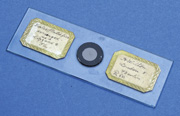 |
|
VICTORIAN BUTTERFLY SCALE ARRANGEMENT, English, c. second half 19th century, labeled in ink by the maker "H. Wilton, London & Berlin, 2 in,. Scales of Butterflies arranged as a Lizzard & Fly." Within a 1/8" (3 mm) diameter area is laid out an intriguing scene of a sinuous lizard approaching an unsuspecting fly. Condition is fine. The imaginative, and obviously very patient maker is so far unrecorded in the standard references. (10126) $950. |
 |
| Lerebours' "Stanhope Microscope" on your Finger | Click on any image for a larger view. Scroll to view more items. |
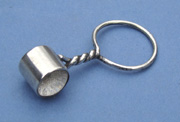 |
|
SILVER FINGER RING, French, c. second quarter 19th century, with a "poinçon" hallmark punch. The small 1/2" (12 mm) long solid glass lens is mounted in a silver cell with a twisted wire handle forming a finger ring 1-1/2" (3.8 cm) in overall height. It provides extremely high magnification at a short working distance, and is in fine condition throughout. The maker was likely the important Noël-Jean Lerebours, working in Paris with his son Noël-Marie (who in 1845 entered partnership with Marc Secretan). Lerebours held the titles of Optician to the Marine and Optician to the Bureau of Longitude, and was an important maker of instruments of astronomy, navigation, microscopy, etc. In an 1846 catalogue this magnifier, with its lens surfaces of differing curvature, is described by Lerebours as a "Stanhope microscope" to distinguish it from solid lenses with the same curvature front and back (e.g. "Brewster spheres, Coddington lenses, and bird's eye lenses"). (10111) $950. |
| Rare American Stand in Hard Rubber, with High-Power Flint/Crown Fused Lens | Click on any image for a larger view. Scroll to view more items. |
 |
| Diversity of Life | Click on any image for a larger view. Scroll to view more items. |
 |
|
FINE VICTORIAN PREPARATIONS FOR THE MICROSCOPE, English, c. last quarter 19th century, each mounted under cover glass on 1" x 3" glass slide with label(s). Represented are Watson & Sons, Suter, Newton & Co., and Norman, plus two with distinctively patterned green with red paper wrappings. Subjects are Butterfly Eggs, Ladybird, Fungus on Buckthorn, Lady Bird Larva, Spicules of a sea cucumber, and iridescent Wing of a Madagascar butterfly. A splendid group, all fine. (10053) $380./the set |
| Bugs under Glass, 130 years ago! | Click on any image for a larger view. Scroll to view more items. |
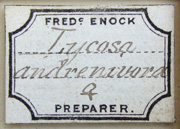 |
|
SPECTACULAR FULL-CREATURE PREPARATIONS, English, c. last quarter 19th century, the six each mounted under cover glass on a 1" x 3" (2.5 x 7.6 cm) glass slide with applied paper label(s). Included are mounts by Norman, Darlaston, and the famous Frederic Enock, displaying Sedge Fly, Gad Fly, Sailor Beetle, Male Earwig, Sheep Tick, plus a Heath Spider. Dramatic mounts in fine condition. (10093) $495./the set |
| The Mastery of Alexander Hett | Click on any image for a larger view. Scroll to view more items. |
 |
|
DEEP-CELL ANATOMICAL INJECTION BY THE MASTER, English, mid-19th century, hand-signed in diamond writing "Hett" and with the specimen identification "Choroid Coat of the Eye of the Ox." Mounted on the standard 1" x 3" glass microscope slide is Hett's distinctive square black cell with deep central circular glazed cavity containing the red injected tissue, fluid, and his mandatory air bubble. Condition is very fine. Alexander Hett specialized in preparing deep-cell fluid mounts, of a quality "unsurpassed by any other fluid-mounted opaque specimens from any source." (Bracegirdle, A History of Microtechnique, 1998). A fine signed example. (10083) $250. |
| Quekett's 1848 Recomendation | Click on any image for a larger view. Scroll to view more items. |
| Innovation by an American College Janitor | Click on any image for a larger view. Scroll to view more items. |
| Magnified Beauty | Click on any image for a larger view. Scroll to view more items. |
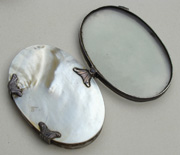 |
|
EXCEPTIONAL OVAL MAGNIFIER SET IN SILVER AND MOTHER-OF-PEARL, probably English, 18th century, measuring 3" x 2" x 1/2" (7.6 x 5 x 1.3 cm) overall (closed). The fine oval magnifying lens is made of grayish glass, mounted in a ringed silver band which swivels out from the exquisite case of nacre (the beautiful iridescent inner lining of some mollusc shells -- and the outer coating of pearls!) framed in lovely chased silver mounts. Condition is fine; this is not only a practical simple magnifier, but a thing of true beauty. (9098) $750. |
| Sophisticated Pocket Microscope by Moritz Pillischer | Click on any image for a larger view. Scroll to view more items. |
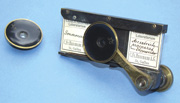 |
|
PILLISCHER'S UNIQUE "LENTICULAR" DESIGN -- A STAGE WITH MICROSCOPE ATTACHED, English, c. 1850, signed "Invented by M. Pillischer, Optician &c, London, No. 136." Made in very limited numbers, this remarkable 3" (7.6 cm) long Pillischer design features a spring stage for 1" x 3" glass slides. Mounted to this hand-held brass stage are some fairly sophisticated accessories, including wheel of stops, substage concave mirror in yoke on double-jointed arm, swiveling lens holder with precision fine focus control, and two interchangeable high power magnifiers (1/4 inch and a remarkable 1/30). The instrument is very finely machined and constructed of contrasting clear lacquered and chemically toned brass, by the innovative Moritz Pillischer. It is in fine condition throughout although without a case. This very early form of Pillischer¹s work was illustrated and described in 1857 by the famous English physician, Dr. Golding Bird. A serious instrument of maximum portability. (10091) $4950. |
| Unusual Clinical Demonstration Microscope | Click on any image for a larger view. Scroll to view more items. |
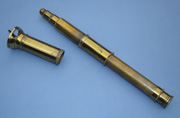 |
|
HAND-HELD BEALE-TYPE DEMONSTRATION MICROSCOPE, English, c. 1865, signed "C. Collins, Optician, 77 G't. Titchfield St., London W." on the main tube and "C36" on the objective. This substantial brass microscope extends from 8-3/4" to 14-3/4" (22 - 37 cm) by focusing drawtube and extension tube. It is equipped with original ocular and objective, giving fine images. A clamp ring permits tension adjustment on the drawtube for fixing the coarse focus position. Fine focus is by adjusting the eye extension tube position. At the specimen end a spring steel clip holds slides in place, and an oval cutout on the side allows illumination of opaque specimens. Condition is excellent, noting some small scratches to the fine original lacquer finish. This is a rare example of the clinical demonstration microscope invented c. 1860 by Lionel S. Beale, Professor of Physiology at King's College. It could be passed conveniently from student to student, or used by the field naturalist, etc. Carpenter, in The Microscope (1868) explains that it was also supplied mounted horizontally on a wood board, directly facing an adjustable oil lamp. Beale himself (How to Work with the Microscope, 1868) devotes three pages and several figures to its description and possible uses, even proposing that the present handheld "Pocket or Clinical microscope" could be arranged in multiples for classroom use, and illustrates four mounted in parallel, as well as eight in an octagonal piece of furniture surrounding a single lamp. (see illustration) Beale's form is quite rare, even though Carpenter and Beale indicate that it was made by several of the principal London makers. Downing finds Charles Collins located at this address from 1863 to 1870. (10122) $2800. |
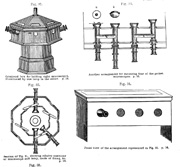 |
| Lens-less Microscope Objectives | Click on any image for a larger view. Scroll to view more items. |
| Attractive Basic Microscope Outfit | Click on any image for a larger view. Scroll to view more items. |
| American Ingenuity, in a Presentation Outfit | Click on any image for a larger view. Scroll to view more items. |
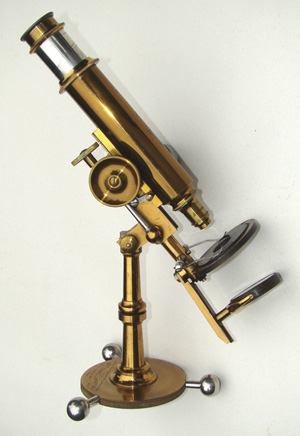 |
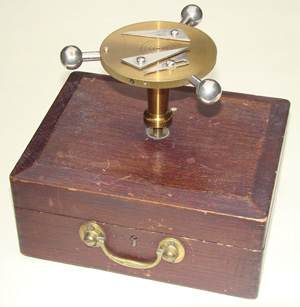 |
|
IMPORTANT GRIFFITH CLUB PRESENTATION OUTFIT, American, c.1881, signed on the rotator/base with a fine presentation "With Regards of the Inventor, to Hon. Lewis Lawrence, Utica, N.Y".; on the main tube "Griffith Club Microscope;" and on the objective "E. Gundlach." The outfit stows compactly in its 7-3/4" x 6" x 3-1/2" (20 x 15 x 9 cm) velvet lined wood case. Extending to a maximum height of 15-1/2" (39 cm) when assembled, the microscope is made of golden lacquered brass with nickel plated fittings. A lever-operated cam acts against a spring to engage the unusual worm and ring gear fine focus action. This unusual instrument is equipped with one ocular, one Gundlach objective, black glass stage with synchronized slide clips, and swinging substage with double mirror, but no condenser provision, allowing extremely oblique lighting both above and below stage. The mirror cell is gutta percha, as employed in early Gundlach designs. The microscope stands on three ball feet to a tapered pillar, with hinged joint 5-1/2" off the table top. This pillar breaks down to permit direct mounting of the microscope to a table, and inverted use of the base as a slide preparation turntable, complete with its adjustable triangular slide grips (see illustration in Padgitt, p. 117). Condition is excellent, with the exquisite original golden lacquer finish. The evolution of the Griffith Club stand is discussed by R.D. Watson in Rittenhouse 9, 25. The present stand would be his second form; Item 11 in Tesseract Catalogue 47 would be the third form. This "queen of grace and utility amongst microscopes" (as described in his award received at the Columbian Exhibition) was invented by Ezra Griffith of Fairport, N.Y. He made continual modifications and improvements in this innovative design, from its introduction in 1880 until his death in 1894, so there can be detailed variations throughout his production. The manufacture itself was apparently by Bausch & Lomb, then by Ernst Gundlach. Griffith was a passionate amateur microscopist, and engaged many members of microscopy clubs in the U.S. and abroad (and thus the "Club" microscope). The recipient of the present splendid example, the only such inventor's presentation recorded, was Lewis Lawrence (1806 -1886), prominent businessman of Utica, with interests in lumber, building construction, roads and railroads. Lawrence seems to have been a truly good man, generous and respectful, a dedicated abolitionist, wealthy but unostentatious. His behavior gained him the informal title "Honorable." Having built up his businesses from scratch, he was a master organizer of the funding and execution of large projects. In just one example of logging he bought a large tract in Oswego Country, hired 600 "clean-living" new immigrants in New York City, organized them efficiently, and sent out 280 cords of wood (2-1/2 acres worth) by rail daily. Included with this splendid microscope is the interesting book Lewis Lawrence by T.J. Brown (1887), with its fine steel engraving of Honorable Lawrence. An important example of this uniquely American microscope. (9096) $12,500.
|
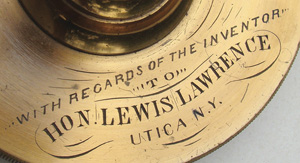 |
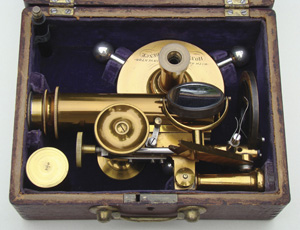 |
| Right-Side-Up Viewing by Nachet | Click on any image for a larger view. Scroll to view more items. |
| Double-Specimen Sliders, 5" long | Click on any image for a larger view. Scroll to view more items. |
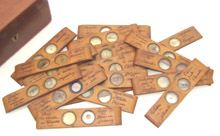 |
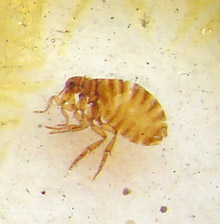 |
| Classic French Student Microscope, c. 1900 | Click on any image for a larger view. Scroll to view more items. |
| Candle Light Shade for Microscopy | Click on any image for a larger view. Scroll to view more items. |
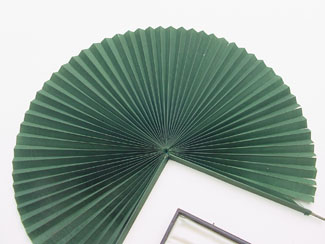 |
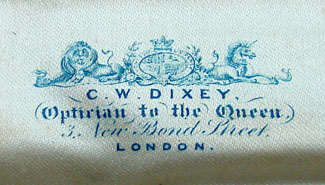 |
| An Uncommon Case-Mounted Microscope | Click on any image for a larger view. Scroll to view more items. |
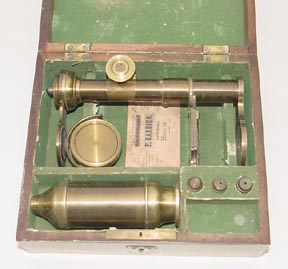 |
||
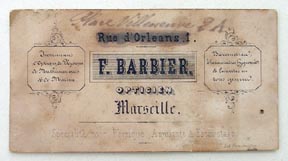 |
||
| Calipers for Microscopy | Click on any image for a larger view. Scroll to view more items. |
| Close-focusing Prismatic Viewer | Click on any image for a larger view. Scroll to view more items. |
 |
| Astronomy |
| Microscopy |
| Dialling |
| Navigation |
| Demonstration & Experimentation |
| Calculation |
| Medical |
| Specials |
| Books New and Old |
| Tesseract Catalogues |